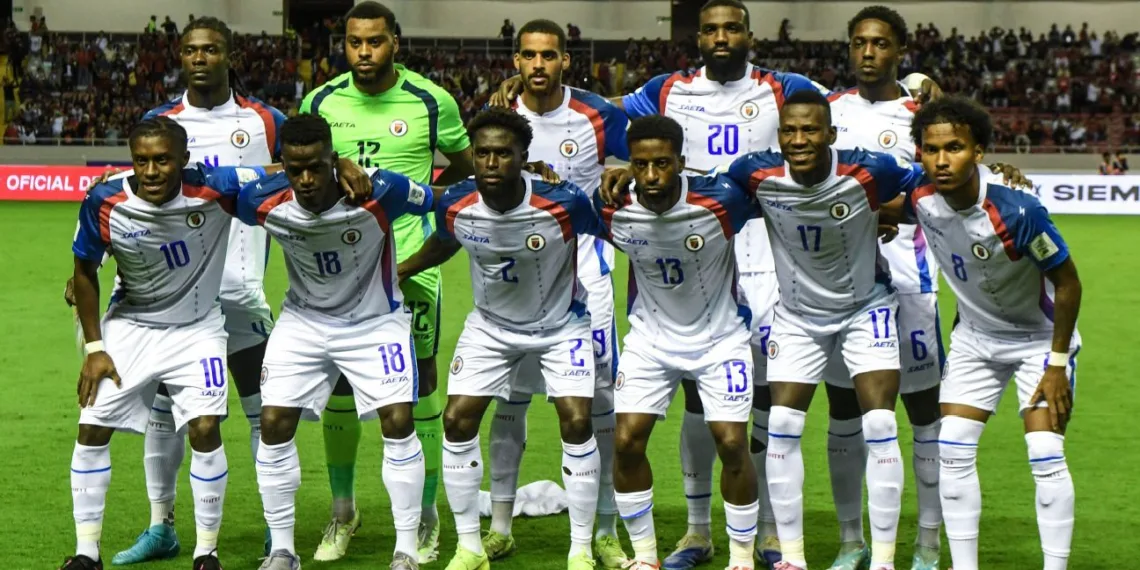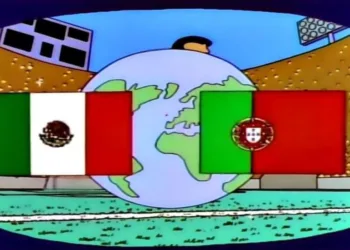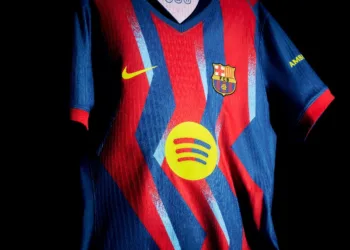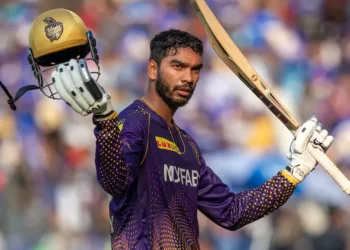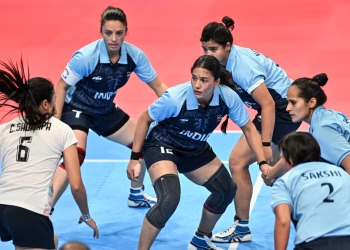Against a backdrop of unprecedented gang violence, political chaos, and a national stadium overtaken by criminals, Haiti has achieved what seemed impossible. On November 18, 2025—the anniversary of Bataille de Vertières, the final battle of the Haitian Revolution—Les Grenadiers secured qualification for the 2026 FIFA World Cup, ending a 52-year absence from football’s grandest stage. The victory came through a 2-0 triumph over Nicaragua at Ergilio Hato Stadium in Curaçao, more than 500 miles from Port-au-Prince, the capital they cannot safely call home.
Haiti qualified for the World Cup for the first time in 52 years, doing so on Bataille de Vertières at Ergilio Hato Stadium in Curuçao, with Les Grenadiers blanking Nicaragua 2-0 to top Group C in the Concacaf region with 11 points. Leading this remarkable achievement was former Kerala Blasters forward Duckens Nazon, who finished as the top scorer in World Cup qualifying with six crucial goals, scripting one of international football’s most inspirational underdog stories.
Table of Contents
Duckens Nazon: From Indian Super League to World Cup Hero
Duckens Nazon’s journey to becoming Haiti’s savior represents the global nature of modern football. The 31-year-old striker played for Kerala Blasters FC in the 2016 Indian Super League season, featuring in 12 matches and scoring two vital goals including one in the second leg of their semifinal against Delhi Dynamos. His time in Indian football may have been brief, but it represented another chapter in a career built on perseverance and constant movement.

Duckens Nazon’s World Cup Qualifying Campaign
| Match | Opponent | Goals Scored | Significance |
|---|---|---|---|
| Sept 9 | Costa Rica | 3 (Hat-trick off bench) | Turned 2-0 deficit into 3-3 draw |
| Oct 10 | Nicaragua | 1 | First goal in 3-0 victory |
| Various | Multiple opponents | 2 | Additional crucial goals |
| Total | All Matches | 6 goals | Top scorer in qualifiers |
Nazon found the opener in the 12th minute against Nicaragua, capitalizing on a loose ball inside the box and tucking the ball away from close range, with the goal marking his sixth to become the leading scorer in the campaign. But his most defining moment came earlier in September when Haiti faced Costa Rica.
Things looked bleak early in the third round when an opening home draw to Honduras was followed by a poor first half at Costa Rica and a 2-0 half-time deficit, but off the bench came Duckens Nazon and a lightning-quick hat-trick from the talismanic striker ultimately earned a share of the spoils in a 3-3 final. That comeback proved pivotal, transforming Haiti’s entire qualifying campaign and demonstrating the mental resilience required to overcome not just opponents, but the impossible circumstances surrounding their national team.
The Gang Violence Crisis: Playing Without a Home
Haiti’s road to the World Cup doesn’t include a stop at home, putting Les Grenadiers in the same category as teams like Ukraine, Palestine, Belarus and Israel as a nation trying to reach the 2026 World Cup in North America without being able to play at home and the advantages that come with that.
The context makes Haiti’s achievement even more extraordinary. The Caribbean nation has been enveloped in violence since the 2021 assassination of president Jovenel Moïse, creating a power vacuum that armed gangs have ruthlessly exploited.
Haiti’s Crisis: The Numbers
| Crisis Indicator | Current Situation |
|---|---|
| Port-au-Prince Gang Control | 85% of capital under gang control |
| Displaced Population | Over 1.3 million Haitians displaced |
| National Stadium Status | Overtaken by gangs in March 2024 |
| Last Home Match | July 2021 |
| Qualifying “Home” Venue | Curaçao (500+ miles away) |
In March 2024, Haiti’s long-standing national stadium, the Stade Sylvio Cator, was overtaken by gangs, with the Haitian federation putting out a statement confirming it had lost possession of the facility and confirming acts of vandalism. No events have taken place there since, and it remains unclear if or when it may host important matches again. This leaves Haiti without an approved venue even if peace were somehow achieved.
The United Nations’ High Commissioner for Human Rights called the situation an “unending horror story,” with a July 2025 report indicating more than 1.3 million Haitians have been displaced as 85% of Port-au-Prince is under the control of gangs.
Mohun Bagan Legend Sony Norde’s Country Makes History
For Indian football fans, Haiti’s qualification carries special significance. Sony Norde, the Mohun Bagan legend who helped the Kolkata giants win the 2014-15 I-League title ending a 13-year drought, hails from the same nation now celebrating World Cup qualification. The Haitian winger’s dynamic performances and emotional connection with Indian fans made him one of the most beloved foreign players in Indian football history.
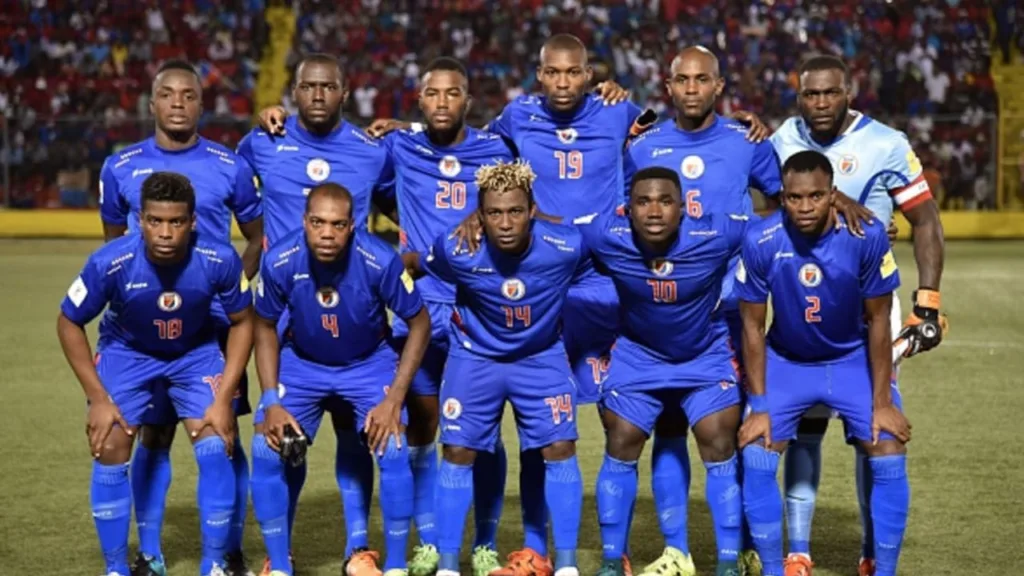
Norde joined Mohun Bagan in July 2014 and immediately became a sensation. He was among the best players in the I-League with nine goals and 13 assists, playing a pivotal role in Mohun Bagan’s championship triumph on May 31, 2015. His dribbling skills, pace, and ability to create opportunities made him an instant fan favorite, cementing his legacy as a Mohun Bagan icon despite leaving in 2018 due to knee injuries.
Now, his compatriot Duckens Nazon—who also experienced Indian football with Kerala Blasters—has led their nation to football’s biggest stage, creating a unique Indian connection to Haiti’s World Cup journey.
The Coach Who Never Set Foot in Haiti
Haiti’s qualification story includes another remarkable detail. Manager Frenchman Sebastien Migné has never set foot in the Caribbean country since he took over the team in June 2024. The security situation made it impossible for the coach to visit, yet he somehow forged a cohesive unit capable of competing against regional powerhouses Costa Rica and Honduras.

Migné’s achievement in bringing European professionalism to a squad scattered across continents, without the foundation of home matches or proper facilities, ranks among coaching’s greatest accomplishments. He convinced players from top European leagues to commit to the cause despite the impossible circumstances.
Key Players in Haiti’s World Cup Qualification
| Player | Club | Position | Contribution |
|---|---|---|---|
| Duckens Nazon | Esteghlal FC (Iran) | Striker | 6 goals (Top scorer) |
| Jean-Ricner Bellegarde | Wolverhampton | Midfielder | Revitalized midfield |
| Hannes Delcroix | Anderlecht | Center Back | Rock-solid defense |
| Johny Placide | Various | Goalkeeper | 6 saves vs Costa Rica |
| Frantzdy Pierrot | AEK Athens | Striker | Winning goal vs Costa Rica |
Head coach Sebastien Migné convinced three players from top leagues in Europe to join the team: Wolverhampton Wanderers midfielder Jean-Ricner Bellegarde, winger Josue Casimir and center back Hannes Delcroix. Bellegarde revitalized Haiti’s midfield while Delcroix provided calm, composed defending in the heart of the backline during crucial qualifiers.
The Final Push: Dramatic Qualification
Haiti’s path to qualification required perfection in their final matches. Entering the last round of fixtures, three teams—Haiti, Honduras, and Costa Rica—could potentially claim the automatic qualification spot from Group C. The tension was unbearable.
Haiti’s 1-0 victory over Costa Rica brought them closer to the 2026 FIFA World Cup and marked their first-ever win against the Ticos in World Cup Qualifying, ending a 5-match winless streak. Frantzdy Pierrot scored the winner while goalkeeper Johny Placide was integral with six saves and a clean sheet, demonstrating the collective determination flowing through the squad.
Then came the final match against Nicaragua in Curaçao, where Haiti had been forced to designate their “home” matches throughout qualifying. Despite the disadvantage of essentially playing neutral-site football throughout the campaign, Haiti produced a commanding performance.
Wingers Louicius Don Deedson and Ruben Providence were on target for Haiti in the 2-0 victory that secured their World Cup spot. When the final whistle blew, emotions overwhelmed players and fans alike. Back in Port-au-Prince—the city they couldn’t play in—scores of Haitians took to the streets with rara bands in Cap-Haïtien and Port-de-Paix celebrating a achievement that transcended sport.
Financial and Logistical Nightmares
Beyond the security challenges, Haiti’s qualification came despite severe financial constraints. In addition to Haiti losing out on local support and the competitive edge, it also dings the coffers of a team that already is at a financial disadvantage compared to most of its rivals. Playing “home” matches in Curaçao meant paying for flights, accommodation, and venue rental—costs that would have been avoided with genuine home matches generating ticket revenue.
The Haitian Football Federation’s administrative struggles compounded these issues. Earlier in qualifying, only 11 of 24 roster players initially showed up at a Barbados training camp five days before matches, highlighting the organizational chaos hampering the team. Yet somehow, through determination and talent, Haiti overcame every obstacle.
A Symbol of Resilience for a Suffering Nation
Don Deedson Louicius, an FC Dallas and national team attacker who grew up near the Toussaint Louverture Airport in Port-au-Prince, said “They can’t live well, and all the places are closed because of the gangs, and violence is crazy”. For Louicius and his teammates, representing Haiti means carrying the hopes of millions suffering under impossible conditions.
Haiti’s first division football relaunched last weekend after special tournaments featured only clubs from regions where gang violence has been less prevalent. “It’s not because things are really getting better, but we’re trying to find a way,” explained federation official Obas. “In Haiti, we have a lot of insecurity, but we still need to live.”
The World Cup qualification provides that hope—a reminder that even in the darkest circumstances, collective effort and talent can achieve the extraordinary. Les Grenadiers will play in only their second World Cup and first since 1974, when they faced Italy, Poland, and Argentina. That 52-year absence represents multiple generations who never witnessed their national team on football’s biggest stage.
What the 2026 World Cup Means
The 2026 World Cup, hosted across the United States, Canada, and Mexico, represents a homecoming of sorts for Haiti. Significant Haitian diaspora communities exist throughout North America, meaning Les Grenadiers will finally experience something approaching genuine home support when they take the field.
Haiti topped Group C with 11 points, finishing ahead of traditional powerhouses Honduras and Costa Rica. They proved that organization, tactical discipline, and individual brilliance can overcome even the most disadvantageous circumstances. Whether training in Curaçao, playing “home” matches 500 miles from home, or dealing with players scattered across global leagues, Haiti found a way.
Duckens Nazon, the former Kerala Blasters and current Esteghlal FC striker, stands at the center of this achievement. His six goals didn’t just secure World Cup qualification—they provided hope to millions suffering in Haiti, demonstrated that perseverance transcends circumstances, and created an inspirational story that will be told for generations.
From Indian football to Iran’s Persian Gulf Pro League to the World Cup stage, Nazon’s journey embodies modern football’s global nature. And for one glorious summer in 2026, Haiti will stand among the world’s elite, having achieved the impossible against odds no other qualifying nation has faced.
FAQs
When did Haiti last qualify for the FIFA World Cup before 2026?
Haiti last qualified for the FIFA World Cup in 1974, meaning their 2026 qualification ends a 52-year absence from football’s biggest tournament. In 1974, they faced Italy, Poland, and Argentina in the group stage.
Why couldn’t Haiti play home matches during World Cup qualifying?
Haiti couldn’t play home matches because their national stadium, Stade Sylvio Cator, was overtaken by gangs in March 2024. With 85% of Port-au-Prince under gang control following the 2021 assassination of President Jovenel Moïse, the security situation made home matches impossible since July 2021.
Who was the top scorer in Haiti’s World Cup qualifying campaign?
Duckens Nazon, former Kerala Blasters forward, was the top scorer with 6 goals in World Cup qualifying. His most crucial contribution was a second-half hat-trick against Costa Rica that turned a 2-0 deficit into a 3-3 draw.
What is the connection between Haiti and Indian football?
Haiti has strong Indian football connections through players like Duckens Nazon (Kerala Blasters, 2016) and Sony Norde (Mohun Bagan legend, 2014-2018). Norde helped Mohun Bagan win the 2014-15 I-League title and became one of Indian football’s most beloved foreign players.
Where did Haiti play their “home” World Cup qualifying matches?
Haiti played their “home” qualifying matches in Curaçao at Ergilio Hato Stadium in Willemstad, more than 500 miles from Port-au-Prince. They haven’t played a genuine home match since July 2021 due to gang violence and political instability.

